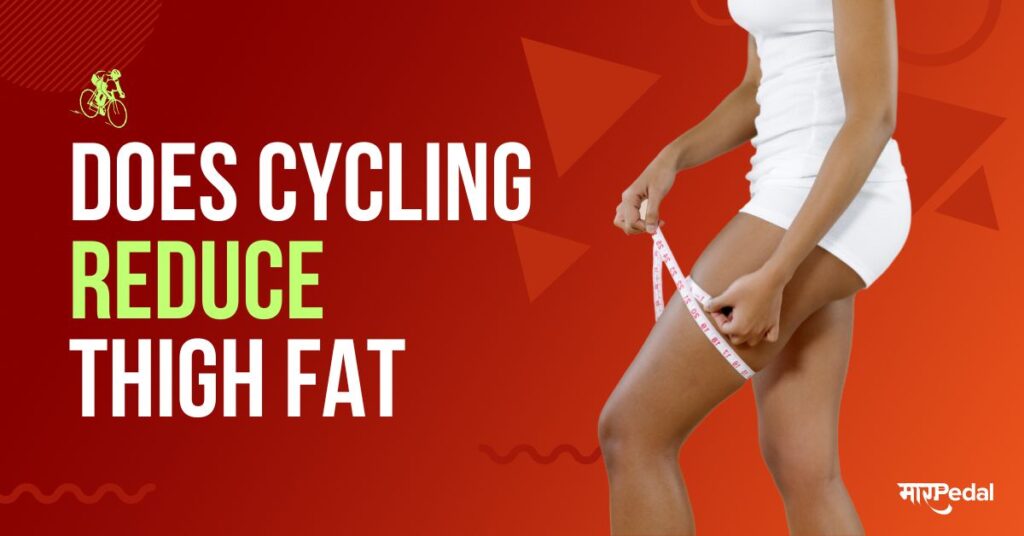
Cycling is an exhilarating sport enjoyed by people of all ages and genders. For female cyclists, taking care of their legs before and after each ride is crucial to ensure optimal performance and reduce the risk of injuries.
This comprehensive guide aims to provide valuable insights, expert tips, and actionable advice for female cyclists, covering essential aspects of cycling legs before and after their rides.
Cycling Legs Before the Ride
Before hopping onto your bike, it’s essential to prepare your legs adequately. Here are some key steps to consider:
1. Warm-Up for Better Performance
Warming up is essential for getting your muscles ready for the upcoming ride. Engage in light aerobic exercises, such as brisk walking or gentle jogging, to increase blood flow to your legs. Additionally, include dynamic stretches targeting major leg muscles to improve flexibility and prevent injuries.
2. Proper Hydration
Hydration is crucial to optimize your cycling performance. Drink sufficient water at least 30 minutes before your ride to stay hydrated throughout the session. Proper hydration ensures your muscles function optimally and reduces the risk of cramps.
3. Fuel Your Body
A balanced pre-ride meal is vital to fuel your body for the physical demands of cycling. Incorporate carbohydrates for sustained energy, along with proteins and healthy fats for muscle support and endurance.
See also: Can we do Cycling after Dinner? Pros and Cons Explained
4. Check Your Bike Fit
Ensure your bike is properly fitted to avoid unnecessary strain on your legs. An ill-fitted bike can lead to discomfort and reduce your cycling efficiency.
5. Mental Preparation
Mental preparation is as important as physical preparation. Visualize your ride, set achievable goals, and maintain a positive mindset. This will help you stay focused and motivated during the ride.
Cycling Legs After the Ride

Post-ride recovery is crucial for allowing your legs to heal and rebuild after an intense cycling session. Here’s how to take care of your legs after your ride:
6. Cool Down and Stretch
After your ride, engage in a cool-down period by cycling at a slower pace. Once off the bike, perform static stretches to release muscle tension and enhance flexibility. Focus on your quadriceps, hamstrings, calves, and hip flexors.
7. Refuel and Rehydrate
Replenish your body with a post-ride meal rich in carbohydrates and proteins within 30-60 minutes after cycling. Additionally, continue to drink water to rehydrate and aid in muscle recovery.
8. Use Compression Garments
Consider wearing compression garments after your ride to promote blood flow and reduce muscle soreness. These garments can also help with recovery by minimizing swelling and inflammation.
See also: Discover the Best Cycling Shorts in India for Your Next Ride
9. Elevate Your Legs
Elevating your legs can facilitate blood circulation and reduce swelling. Lie down and prop your legs up against a wall or use a foam roller under your feet to elevate them.
10. Ice Bath Therapy
Taking an ice bath after a rigorous ride can help reduce muscle inflammation and soreness. Fill a bathtub with cold water and ice cubes and soak your legs for 10-15 minutes for maximum benefits.
Preventing Injuries
Injuries can hamper your cycling progress, so it’s essential to take preventive measures. Here are some tips:
11. Listen to Your Body
Pay attention to any discomfort or pain in your legs before and after cycling. If you feel any unusual sensations, take a break and consult a healthcare professional if needed.
12. Cross-Train for Balance
Engage in cross-training activities to build overall body strength and balance. Activities like yoga, swimming, or strength training can complement your cycling routine and reduce the risk of overuse injuries.
13. Gradual Progression
Avoid pushing yourself too hard too soon. Gradually increase the intensity and duration of your rides to allow your body to adapt and prevent overuse injuries.
14. Stretch Regularly
Incorporate regular stretching sessions into your routine to maintain flexibility and prevent muscle tightness. This will reduce the risk of strains and sprains during cycling.
15. Use Proper Gear
Invest in quality cycling gear, including well-fitted shoes and padded shorts. Proper gear ensures comfort and minimizes the risk of injuries.
Recovering from Injuries
In case you do experience a cycling-related injury, here’s how to recover effectively:
16. Rest and Seek Medical Attention
If you sustain an injury, allow your body ample rest to recover. Consult a healthcare professional for a proper diagnosis and treatment plan.
17. Physical Therapy
Physical therapy can be beneficial in helping you recover from cycling injuries. A qualified therapist can design a customized rehabilitation program to strengthen your legs and prevent future issues.
18. Focus on Nutrition
Maintain a balanced diet rich in nutrients to support your body’s healing process. Adequate protein intake is essential for muscle repair.
19. Gradual Return to Cycling
After recovering from an injury, ease back into cycling gradually. Start with shorter, less intense rides and gradually increase the intensity as your body heals.
20. Listen to Your Body (Again!)
During your recovery period, pay close attention to your body’s signals. If you experience pain or discomfort while cycling, take a step back and give yourself more time to heal.
Unique Facts about Female Cycling Legs
Now, let’s explore some fascinating facts that make female cycling legs unique:
- Muscle Composition: On average, women tend to have a higher percentage of slow-twitch muscle fibers in their legs compared to men. Slow-twitch fibers are more fatigue-resistant and contribute to endurance, making female cyclists well-suited for long-distance rides.
- Q-Angle Differences: The Q-angle is the angle formed by the quadriceps muscles and the patellar tendon. Women generally have a wider Q-angle than men, which can influence knee alignment during cycling. Proper bike fit and pedal technique are crucial for preventing knee pain and injuries.
- Hormonal Influence: Female cycling performance can be influenced by hormonal fluctuations throughout the menstrual cycle. During the follicular phase, when estrogen levels are higher, women may experience improved endurance and increased pain tolerance. On the other hand, during the luteal phase, progesterone can lead to increased muscle fatigue.
- Pelvic Structure: Women typically have wider pelvic bones than men, affecting how they sit on a bicycle saddle. A saddle that matches the pelvic width is crucial for comfort and preventing discomfort in the pelvic region.
- Quadriceps Dominance: While cycling primarily engages the quadriceps muscles, female cyclists may experience quadriceps dominance. This means that other leg muscles, such as the hamstrings and glutes, may not be as actively engaged. Including cross-training exercises can help address this imbalance.
- Susceptibility to Nerve Compression: Some female cyclists may experience nerve compression issues, such as the pudendal nerve. This can lead to discomfort and numbness in the genital area. Proper saddle choice and bike fit can help alleviate this problem.
- Bone Density Considerations: Female cyclists, particularly those with amenorrhea (absence of menstrual periods), may be at risk of lower bone density due to hormonal imbalances. Adequate calcium intake and weight-bearing exercises can help support bone health.
- Risk of IT Band Syndrome: Female cyclists may be more susceptible to iliotibial (IT) band syndrome due to their wider hips and Q-angle. Regular stretching and strengthening exercises can help prevent IT band issues.
- Foot Pronation: Women may have different foot pronation patterns than men, which can affect pedal alignment. Proper foot support and bike shoe selection can enhance pedaling efficiency and reduce the risk of foot-related injuries.
- Varicose Veins: Female cyclists who spend prolonged hours on the bike may be at a higher risk of developing varicose veins due to increased pressure on the legs. Wearing compression garments during rides can aid in blood circulation and reduce this risk.
See also: Does Cycling Reduce Breast Size? The Truth Unveiled
Understanding these unique aspects of female cycling legs can help female cyclists optimize their performance, prevent injuries, and enjoy their rides to the fullest.
Conclusion
Cycling is a fantastic activity that brings numerous physical and mental benefits to female cyclists. By taking proper care of their legs before and after rides, female cyclists can enhance their performance, prevent injuries, and make the most of their cycling journey. Remember to warm up, cool down, and listen to your body to have a safe and enjoyable cycling experience. Happy cycling!
FAQs
How does cycling change a woman’s body?
Cycling is an excellent form of exercise for women, offering numerous health benefits. It primarily helps in building muscle tone, especially in the lower body, improving cardiovascular health, and aiding in weight loss. Regular cycling can result in stronger leg muscles, a toned lower body, and improved endurance. It also helps in burning calories, which can contribute to overall body fat reduction. Additionally, cycling has low impact on the joints, making it a sustainable exercise for long-term fitness.
Does cycling give you nice legs?
Yes, cycling can contribute to more toned and sculpted legs. It is a great workout for the leg muscles, particularly the quadriceps, hamstrings, glutes, and calves. Regular cycling can increase muscle definition and strength in the legs without adding bulk, leading to a leaner appearance. The intensity and duration of cycling, along with a balanced diet, play a significant role in shaping the legs.
How long does it take to tone legs cycling?
The time it takes to tone legs through cycling varies depending on several factors like the individual’s starting fitness level, diet, cycling intensity, and frequency. Generally, noticeable changes can be seen after a few weeks of consistent cycling. For significant toning and muscle definition, it might take a few months. Consistency is key, and combining cycling with strength training and a healthy diet can accelerate the toning process.
How long does it take to see results from cycling?
Results from cycling can usually be noticed within a few weeks to a couple of months. This varies based on individual fitness goals, such as weight loss, improved endurance, or muscle toning. For visible weight loss and muscle tone, consistent cycling for at least 2-3 months is often necessary. However, improvements in mood and energy levels can be noticed much sooner.
Is 30 minutes of cycling a day enough?
Yes, 30 minutes of cycling a day can be sufficient for health benefits, especially for beginners or those looking for a moderate workout. This duration can help improve cardiovascular health, build endurance, and aid in weight loss when combined with a healthy diet. For those with specific fitness goals like significant weight loss or muscle building, longer or more intense cycling sessions may be required.
How much do you lose from 30 min of cycling a day?
The amount of weight loss from 30 minutes of cycling a day depends on various factors such as the individual’s weight, cycling intensity, and overall diet. On average, a person can burn between 200 to 500 calories in a 30-minute cycling session. Consistent daily cycling combined with a calorie-controlled diet can lead to a steady weight loss over time. However, individual results may vary.






